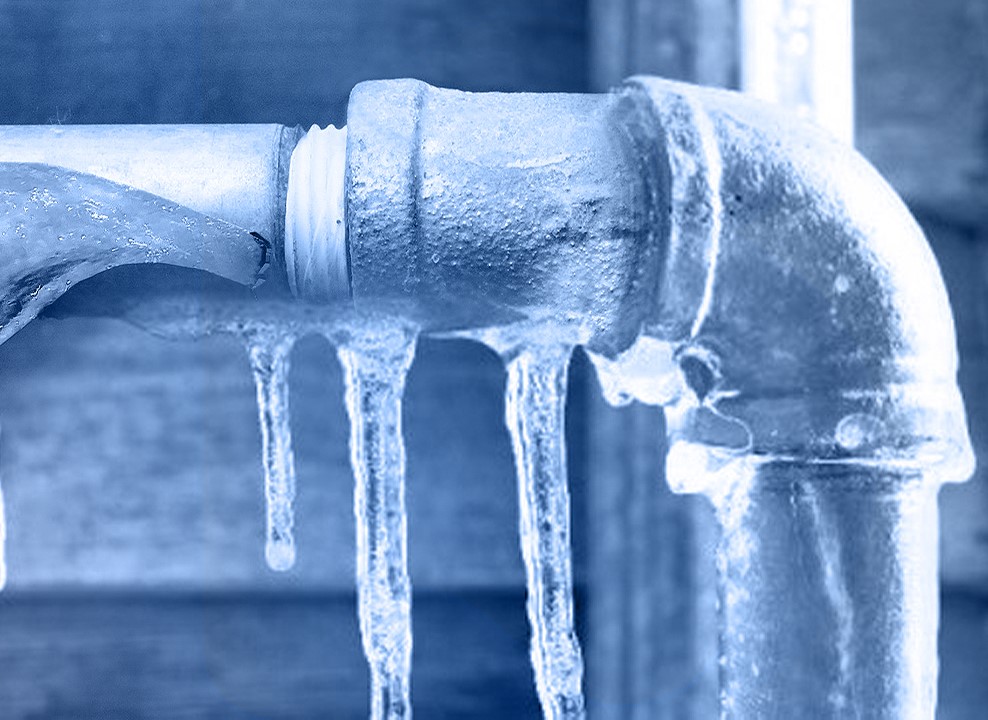Protecting Against Frozen Plumbing in Winter: Critical Advice
Protecting Against Frozen Plumbing in Winter: Critical Advice
Blog Article
We've uncovered this post relating to How To Avoid Freezing Pipes listed below on the net and reckoned it made perfect sense to quickly share it with you on this page.
:strip_icc()/snow-outdoor-faucet-pipes-4af65d1e5e904fb1aa7bf74071fe5d89.jpg)
Cold weather can ruin your pipes, particularly by freezing pipelines. Here's how to prevent it from taking place and what to do if it does.
Introduction
As temperatures decline, the danger of frozen pipelines rises, possibly causing pricey repair work and water damage. Recognizing how to stop icy pipes is essential for property owners in cool environments.
Prevention Tips
Insulating prone pipelines
Wrap pipes in insulation sleeves or make use of heat tape to secure them from freezing temperatures. Focus on pipelines in unheated or exterior locations of the home.
Home heating techniques
Maintain interior spaces properly heated, especially areas with plumbing. Open cupboard doors to enable cozy air to distribute around pipelines under sinks.
Just how to recognize frozen pipelines
Try to find reduced water flow from taps, unusual odors or sounds from pipes, and noticeable frost on exposed pipelines.
Long-Term Solutions
Structural modifications
Take into consideration rerouting pipes away from exterior walls or unheated locations. Add additional insulation to attic rooms, cellars, and crawl spaces.
Upgrading insulation
Buy high-quality insulation for pipes, attics, and walls. Appropriate insulation assists keep consistent temperatures and decreases the danger of frozen pipelines.
Shielding Outdoor Plumbing
Yard tubes and outdoor faucets
Disconnect and drain yard tubes before wintertime. Mount frost-proof faucets or cover exterior faucets with shielded caps.
Comprehending Icy Pipelines
What creates pipes to freeze?
Pipes freeze when subjected to temperatures below 32 ° F (0 ° C) for prolonged durations. As water inside the pipes freezes, it broadens, taxing the pipeline wall surfaces and possibly triggering them to break.
Risks and damages
Icy pipelines can result in supply of water disturbances, building damage, and costly fixings. Ruptured pipelines can flood homes and cause extensive architectural damages.
Indicators of Frozen Pipes
Identifying icy pipes early can avoid them from breaking.
What to Do If Your Pipes Freeze
Immediate actions to take
If you presume frozen pipes, keep taps open to ease stress as the ice thaws. Utilize a hairdryer or towels taken in warm water to thaw pipelines slowly.
Conclusion
Protecting against icy pipes requires positive procedures and quick actions. By comprehending the causes, indications, and preventive measures, homeowners can safeguard their pipes during winter.
6 Proven Ways to Prevent Frozen Pipes and Protect Your Home
Disconnect and Drain Garden Hoses
Before winter arrives, start by disconnecting your garden hoses and draining any remaining water. Close the shut-off valves that supply outdoor hose bibs and leave the outdoor faucet open to allow any residual water to drain. For extra protection, consider using faucet covers throughout the colder months. It’s also important to drain water from any sprinkler supply lines following the manufacturer’s directions.
Insulate Exposed Pipes
Insulating your pipes is an effective way to prevent freezing. Pipe insulation is readily available at home improvement stores and is relatively inexpensive. Pay close attention to pipes in unheated areas such as the attic, basement, crawl spaces, or garage. Apply foam insulation generously to create a buffer against the cold. You can also wrap your pipes in heat tape or thermostat-controlled heat cables for added warmth.
Seal Air Leaks
Inspect your home for any cracks or openings that could let in cold air. Seal any holes around the piping in interior or exterior walls, as well as the sill plates where your home rests on its foundation. Additionally, make sure to keep your garage door closed unless you’re entering or exiting. Leaving it open creates a significant air leak that can lead to frozen pipes.
Allow Warm Air Circulation
During cold snaps, it’s essential to allow warm air to circulate evenly throughout your home. Leave interior doors ajar to promote better airflow. Open kitchen and bathroom cabinets to help distribute heat consistently around the rooms. If you have small children or pets, be sure to remove any household chemicals or potentially harmful cleaners from open cabinets for safety.
Let Faucets Drip
A small trickle of water can make a big difference in preventing ice formation inside your pipes. When temperatures drop significantly, start a drip of water from all faucets served by exposed pipes. This continuous flow helps prevent the water from freezing. Additionally, running a few faucets slightly can relieve pressure inside the pipes, reducing the chances of a rupture if the water inside does freeze.
https://choateshvac.com/6-proven-ways-to-prevent-frozen-pipes-and-protect-your-home/

As a devoted reader on Prevent Frozen Pipes , I figured sharing that piece of content was a great idea. Sharing is good. You won't know, you will be doing someone a favor. Thank you for taking the time to read it.
Book Service Now Report this page